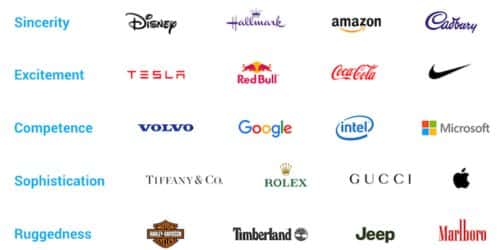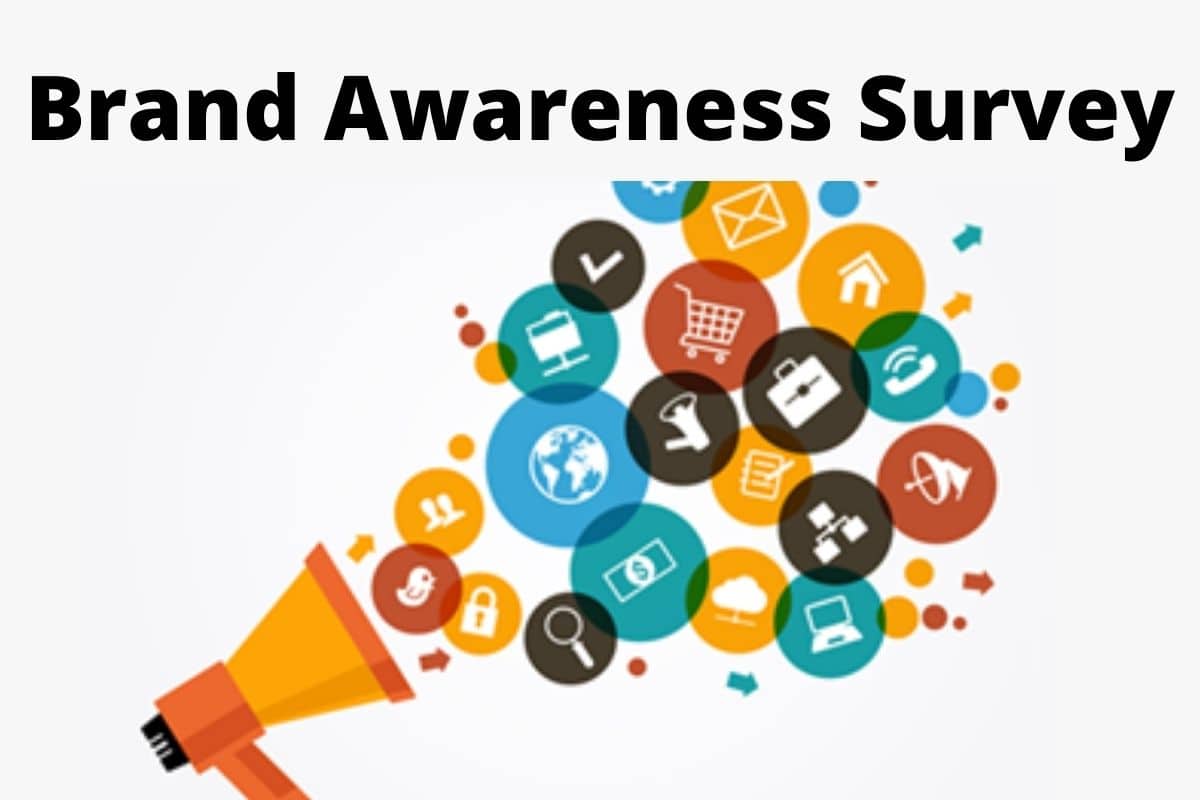Any marketing strategy must include a well-developed brand personality. Do you consider your company to be daring, serious, or traditional? If so, those are the kinds of customers you’re looking for.
The modern consumer wants to be able to relate to and recognize a brand. Unfortunately, if a brand isn’t relatable to its target demographic, those customers may seek their products or services elsewhere. Fortunately, organized brand personality frameworks can assist firms in developing a distinct brand personality. A brand personality framework provides a foundation for organizations to build an executable.
Learn some of the greatest ways for developing an effective brand personality framework that may carry your message to your target audience and make them more inclined to remain around in this article.
What is Brand Personality?
Simply described, brand personality is the sum of a brand’s emotional, psychological, and behavioral tendencies that remain distinct over the duration of its lifecycle. They are the human characteristics and traits to which customers can relate.
The personality of a brand is an aspect of its identity. It can be communicated through tone of voice, communication style, and actions, as well as deliberately building consumer impressions through in-market communications.
What is the Importance of Brand Personality?
We live in a world where brands are clambering over each other to resonate authentically with audiences. As a result, having an easily identifiable and appealing brand personality is critical to maintaining a brand’s DNA healthy.
Giving brand-specific personality features will make it more human. Customers will be concerned by its actions and values. They will feel as if they are speaking to a single person, resulting in brand attachment.
A well-executed brand personality contributes to brand equity by separating a company or organization from its competitors while preserving (or growing) a competitive advantage.
Why is Brand Personality So Important?
Businesses that show human personality to their target audience can increase brand recognition and client loyalty. Brand personality creates something recognized and allows customers to connect with the brand. Here are some reasons why you should give your brand a personality:
- Improves your brand’s story
- Increases brand awareness
- It distinguishes your brand from the competitors.
- It fosters brand loyalty and emotional attachment.
#1. Improves your brand’s story
A brand story communicates a company’s ideals and basic values and can help to establish consumer trust. Consumers are more likely to develop a deep connection and relate to a firm when it exposes intimate information about its brand, such as its humble beginnings. As the proverb goes, “Birds of a feather flock together.” Having brand personality qualities can help your audience feel like they are a part of your brand’s story and can foster loyalty. Because your story is just as important as the items or services you offer, use storytelling in your brand strategy to reach out to your target audience.
#2. Increases brand awareness
Brand personality can increase consumer recognition, resulting in not only new customers but also stronger relationships with present customers. If your brand personality is distinct and distinctive enough, you will stand out from the crowd, resulting in increased brand equity.
Consumer awareness, or the feelings and perceptions associated with a brand based on their experiences, can be defined as brand equity. As a result, if your brand personality results in excellent customer experiences, they are more inclined to consider you for any future demands.
#3. It distinguishes your brand from the competitors.
Brand personality can help differentiate your company’s products or services from those of competitors and develop consumer brand loyalty. It’s an important part of brand uniqueness since it adds depth and refinement to your company.
Businesses can gain an advantage when a product is seen to provide more value to consumers, as we see with Apple products and their consistent pricing. In truth, Apple does not provide discounts or deals because it has built a brand personality that expresses sophistication—customers regard Apple items to be of high quality and are prepared to pay the full price.
#4. It fosters brand loyalty and emotional attachment.
Businesses and corporations seek repeat customers. They can accomplish this by understanding customer demands, solving an issue that their target audience is experiencing, and connecting on an emotional level.
People are being exposed to brand advertisements at an unprecedented rate. To drown out the noise, businesses must provide more than just a product or service. Successful brand personalities provide a friendly attitude and an effective answer to the consumer’s problem, and they meet the client on their level as if it were the first time they met them.
Brand Personality Framework
A brand personality framework can assist your company in organizing its aims and developing a strategic brand personality. Companies rely on Jennifer Aaker’s model, Carl Jung’s collective unconscious psychological theory, and 12 brand archetypes. Jung proposed that people from all cultures recognize and classify certain symbols as personality traits. Marketers utilize this method to communicate the personality of their brands.
Aaker’s model, on the other hand, is the most often utilized and breaks down the five characteristics of brand personality that exist.
Aaker’s Five Dimensions of Brand’s Personality
Jennifer Aaker, a Stanford graduate, identified five brand personality factors based on current research and evidence in personality psychology. She integrated these human qualities into the brand personality construct. These dimensions are as follows:
#1. Sincerity
Brands that express sincerity typically exhibit characteristics such as wholesomeness, cheerfulness, honesty, and down-to-earthiness. They’re usually family-friendly, like Disney or Hallmark. Because consumers are more inclined to buy from a brand if they share a similar personality, this personality type may be ideal for your company if you operate in the culinary, hospitality, or safety industries.
#2. Excitement
Exciting brands are generally seen as spontaneous, sporty, outgoing, edgy, and on-trend. These brands are frequently aimed at younger populations. This is seen in the energy-loving brand Red Bull, which caters to athletes, entertainers, and those who lead an active lifestyle. Celebrity endorsements, concerts and music, social media, and extreme sports keep Red Bull active and connected with its target demographic.
#3. Competence
Competent brands are known for being dependable, intelligent, and meeting high standards. They’re also frequently regarded as thought leaders and industry experts—companies that customers can rely on to solve their problems. When addressing competency, one brand that springs to mind is Microsoft. For decades, the brand has been at the vanguard of innovation, releasing computing products that consumers can trust.
If you work in health care, finance, insurance, or logistics, this personality factor may be applicable to your company.
#4. Sophistication
Brands on the sophistication dimension are frequently associated with characteristics such as elegance, luxury, and the upper class. When you think of sophistication, you might think of Louis Vuitton, a brand that sells premium handbags and clothing. Sophisticated brands mostly provide prestige. If your brand wants to sell higher-end products, you may try encapsulating sophistication to connect with the ideal customers.
#5. Ruggedness
When people hear the word “rugged,” they may conjure up images of toughness and durability. A rough personality characteristic can appear strong and adventurous. Harley-Davidson is a perfect example of a tough brand. Customers recognize this brand for its daring sense of adventure and a never-ending desire for freedom and independence. If you want to attract clients that want to express themselves and see everything the world has to offer, build a tough personality.
Elements of Brand Personality
People can bring their brand personality to life in a variety of ways. The components listed below can assist you in developing a brand personality that effectively communicates your brand message:
#1. Visual identification
Consumers can recognize a brand based on its appearance. This can include a brand’s logo, color scheme, and typeface. For example, many people identify the Apple brand as a minimalist representation of an apple.
#2. Brand voice
People can know their favorite song from a single note. The same is true for brand sound. Jingles, slogans, and sound bites can help a brand stand out. Consider Netflix and how “ta-dum” denotes a time to unwind.
#3. Brand activity
Visual components in marketing materials and audience involvement can reveal a brand’s personality traits. Wendy’s Twitter account exemplifies this since it delivers wit and a caustic attitude in a fun style that fans like.
Examples of Brand Personality
#1. Nike
Nike’s marketing materials exude excitement, passion, and energy, from its motto “Just Do It” to its mission statement “To bring inspiration and innovation to every athlete in the world.”
Nike as a person is a passionate sports fan, an avid athlete, and someone who is imaginative and forward-thinking. Nike as a person is interested in the latest and best in wellness and fitness.
Consider how this manifests itself in Nike’s marketing strategy: “No more waiting…” begins the caption of a recent Nike Instagram post.
Nike’s website and social media pages are vibrant and fast-paced, with Olympic participants jogging and Serena Williams striking a racquet.
If you watch a Nike commercial on TV, you will see the same personality – someone who is eager, active, and ready to go.
#2. Chanel
Look no further than Chanel for a brand personality that defines refinement.
To begin, consider the brand’s mission statement: “To be the Ultimate House of Luxury, defining style and creating desire, now and forever.”
Consider their Instagram page: the Chanel team use pastel blues, bright yellows, and enough black space to attract attention to a single focus point.
Their retro, minimalist concept effectively conveys a smart brand personality.
Chanel as a person is someone who cares profoundly about fashion, is extremely polished and never says the wrong thing, and is both sophisticated and worldly.
#3. REI
There aren’t many brands that are as diametrically opposed to Chanel as REI, so let’s have a look at their personality next.
REI is robust, rugged, and outdoorsy.
The homepage of their website currently reads, “Celebrate the power within you,” while the About Us page states, “At Recreational Equipment, Inc. (REI), we think a life outdoors is a life well-lived! We think that we find our greatest selves in the wild, untamed, and natural regions, thus our mission is to instill a lifelong love of the outdoors in all.”
REI is that “Earthy-crunchy” friend who enjoys camping, hiking, swimming — you name it, as long as it takes place outside. REI is also dedicated and focused on the environment, and only purchases sustainable products.
#4. Volvo
Volvo as a person is solid, strong, and dependable. They take pride in “their years of leadership in automotive safety” and are disciplined, responsible, and principled.
Take a look at the following Volvo commercial, which emphasizes the automobiles’ safety above everything else:
Furthermore, on Volvo’s About Us page, you’ll find statements like, “For nearly a century, we have been making life easier, better, and safer with cutting-edge technology,” and “Volvo Cars is a brand for people who care about the world we live in and the people around us” — all of which suggest a dependable personality.
While rival car dealerships may emphasize a vehicle’s flashy features, Volvo remains devoted to one fundamental value: safety.
How to Develop a Brand Personality
After looking at some examples and characteristics of brand personalities, you may be asking how you might develop your own brand personality.
Finally, you should accomplish this as soon as possible since a brand personality can assist guide your marketing team’s decisions and guarantee your entire team remains consistent across channels — and consistency is critical for brand recognition and long-term customer loyalty.
Whether you’re developing a brand personality for the first time or looking to revamp an existing one, we’ve got you covered. Keep reading to learn the six steps you’ll need to take to develop a powerful, lasting brand personality.
#1. Determine your values.
Values, like any other human being, may determine who your brand is, the decisions it makes, and how it acts.
So, to begin, outline your fundamental values: what is most important to your brand? (Hint, hint: it should be whatever is most important to your target audience.)
After you’ve defined your brand’s values, write them down in a value statement, which will serve as the foundation for your brand’s personality.
#2. Draw inspiration from your target customer, as they are already who your brand should be.
REI’s brand personality works because its target market is outdoor lovers; nevertheless, the brand’s personality would be completely worthless if the brand was targeting office professionals.
This is why it’s critical to start with your audience’s preferences, behaviors, and expectations.
To guarantee you have a firm understanding of your buyer persona, undertake qualitative and quantitative research on your target population.
To start understanding your buyer persona, ask questions like these:
- Is my target audience more concerned with luxury or affordability?
- Are they motivated by emotions or by logic?
- What is most important to them while purchasing products? Sustainability? Safety? Entertainment?
- What does my target audience do in their spare time?
- What are they concerned about?
- What are their likes and dislikes?
The more you know about your target customer, the easier it will be to build your brand’s personality; your brand should reflect and reinforce who your buyer persona is — or who they want to be.
Chanel’s brand personality, for example, resonates so powerfully with its audience because it embodies attributes that matter to its audience, like as luxury and refinement; if Chanel were targeting a more affordable audience, it would fail.
#4. Pose questions to yourself as if your brand were a person.
Once you’ve created a rough sketch for your brand’s personality, you can fine-tune it by asking yourself (and your team) questions as if your brand were actually a person.
This may sound stupid, but consider the following:
- What happens when my brand attends a party?
- What topics does my brand discuss with its peers?
- What excites and frightens my brand?
- What motivates my brand to behave in this manner?
It’s critical that you can describe your brand in great detail. This information doesn’t have to be public — in fact, it probably won’t be — but it will be used on the back end so your marketing team can create materials that resonate with your audience and begin building strong brand loyalty. If done well, your audience will begin connecting to your brand without even realizing why they feel as emotionally compelled as they do.
#5. Create a style guide for your team’s brand.
Your team will change over time as new people join and others depart. If you don’t have clear guardrails that explain who your brand is… and who it isn’t… you risk diluting the brand personality over time.
To fight this, build a brand style guide that describes how the brand personality will manifest itself through your marketing materials, such as what typeface displays the personality of your brand. What about colors? Language, voice, tone? Visuals?
The more specific your brand style guide, the more likely you are to see consistency across channels. Additionally, take the time to outline who your brand isn’t. These guardrails will ensure your brand doesn’t sound and act differently on social channels compared to your website.
Iterate five times.
As you undertake market research, you’ll want to have an open mind about changing your personality if it no longer serves your audience or satisfies their demands.
For example, if market research reveals that customers perceive your brand to be a little too aggressive, you may soften your brand’s personality and use more calming language across all channels to address this.
With these pointers in mind, you’re well on your way to creating a strong, distinct brand personality that works best for your company.
Finally, the personality of your brand has a direct impact on how emotionally invested your customers are in your company – and how ready they are to stick around for the long run.
How to Communicate Your Brand Personality
Knowing your brand personality is critical for making your brand stand out in the marketplace; you’ve just gone through a lengthy process to establish your character, but it will all be for naught if you can’t convey it effectively.
This section will teach you everything you need to know about expressing your brand’s personality correctly.
#1. Use Brand Personality to Enhance Brand Message
To establish your brand positioning, it is critical to explain your value proposition through brand personality, as this is the easiest approach to get your personality over to your target audience.
Brand messaging begins within your organization; it is not only how your customers see your brand, but also how your employees perceive it. Your company culture, vision, and mission statement determine how potential customers will experience your brand.
Personalize your brand language by using personality attributes to all of its components, including the mission and vision statement, value proposition, slogans, voice, and others.
#2. Use Brand Personality to Tell Your Brand Story
Forbes claims that brand storytelling is the future of marketing and that it makes your brand 22 times more memorable than facts and data.
A captivating brand narrative is not about your brand or you and your team; it is about whether your target audience can see themselves in your brand. An effective brand story will always be relevant to the lives of its target audience.
As a result, you must tell your audience the story they want to hear.
And now that you have two key players for your brand story: your audience and your human buyer persona, storytelling will be much easier.
You can now use your brand personality to tell a fascinating story to your audience.
#3. Use Brand Personality to Enhance Your Brand Identity
You’ve aligned your brand’s language, voice, tone, and personality qualities; now it’s time for your personality to reflect on the face of your brand, which is brand identity.
And how do you do it? Brand identity includes your brand colors, typefaces, logos, and other brand visual identity elements, thus incorporating all of your brand’s personality attributes into these visual aspects is one of the most effective ways of communicating your brand personality.
Here are some brand identification elements where you can express your personality:
Brand Logo
Your logo is the most significant visual part of your brand identification; it’s a powerful marketing tool that you can use to express your brand colors, fonts, and, most importantly, your brand personality. Statistics show that your logo is the most recognizable brand identifier.
As a result, you should create your logo with all of your brand’s attributes in mind in order to accurately express your brand’s personality.
Brand Colors
Colors play an important part in generating different emotions in your customers, and each color creates a different impression on your customers. If you still don’t have any brand colors, learn about color psychology to determine which colors will suit your brand personality and choose appropriate colors.
Typography
The fonts you use to express your brand message or display any text from your brand can represent your personality; if your firm currently has brand fonts, make sure they complement your brand personality.
Alternatively, if they don’t, you should reconsider your brand fonts to reflect your brand personality; here’s a good tutorial on the anatomy of typography to get you started.
Conclusion
We may not be able to shake their hands or embrace them, but as prominent brand personality examples show, we do relate to the brands in our lives as if they were people, and in many cases, the relationships we form with our favored brands’ shape who we are.
Its quirks and eccentricities are what make your brand relatable and differentiate from the competition—ideally on a deep and meaningful level—and should be carefully linked with your brand positioning.
Understanding personality branding will help you create a real, magnetic, and, most importantly, consistent brand personality that will keep people coming back for more.
- Personality Branding: What Is It, Examples & Strategies
- BEST PERSONALITY TESTS: Best Personality Test in the Workplace
- CHANEL LOGO: What it Symbolizes, Meaning, History.
- What Are Tips On Becoming A Brand Ambassador






